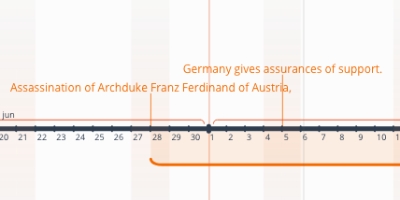Battle of Gravenstafel (apr 22, 1915 – apr 23, 1915)
Description:
In the hamlet of Gravenstafel at about 5:00 p.m. on 22 April, the German Army released 168 long tons (171 t) of chlorine gas over a 6.5 km (4.0 mi) front on the line held by French Territorial and colonial Moroccan and Algerian troops of the French 45th and 87th divisions. Although poison gas had been used before, at the Battle of Bolimów three months earlier, the gas had liquefied in the cold and become inert. German troops carried 5,730 gas cylinders, weighing 90 pounds (41 kg) each, to the front by hand. The cylinders, opened by hand, relied on the prevailing wind to carry the gas towards enemy lines. Because of this method of dispersal, a large number of German soldiers were injured or killed while carrying out the attack. Belgian troops wearing early gas masks, 1915 Belgian troops wearing early gas masks, 1915 The French troops in the path of the gas cloud sustained about 6,000 casualties. Many died within ten minutes (primarily from asphyxia and tissue damage in the lungs), and much more were blinded. Chlorine gas forms a hypochlorous acid when combined with water, destroying moist tissue such as the lungs and eyes. The chlorine gas, denser than air, quickly filled the trenches and forced the troops out into the heavy enemy fire. Anthony R. Hossack of the Queen Victoria's Rifles described the chaos as the French Colonial Corps troops fled from the gas. A 4-mile (6.4 km) gap was left in the front line. The German High Command had not foreseen the effectiveness of the new weapon and all available troops had been transferred to Russia, leaving few reserves in the west. General von Falkenhayn, Chief of the German General Staff, had ordered the attack as a limited effort by the German 4th Army. German troops advanced at 5:00 p.m., but dusk, apprehension about the effect of the gas and the lack of reserves prevented the Germans from exploiting the gap more significantly. Canadian troops defended the flank of the break-in by urinating into cloth and holding them to their faces to counter the effects of the gas. Casualties were especially heavy for the 13th Battalion of the Canadian Expeditionary Force (CEF), which was enveloped on three sides and over-extended in securing its left flank after the Algerian Division broke. At Kitcheners' Wood, the 10th Battalion of the 2nd Canadian Brigade was ordered to counter-attack in the gap created by the gas attack. They formed up after 11:00 p.m. on 22 April, with the 16th Battalion (Canadian Scottish) of the 3rd Brigade arriving to support the advance. Both battalions attacked with over 800 men, in waves of two companies each, at 11:46 p.m. Without reconnaissance, the battalions ran into obstacles halfway to their objective; engaged in small-arms fire from the wood, they began an impromptu bayonet charge. The attack cleared the former oak plantation of Germans at a 75-percent casualty rate.Added to timeline:
Date:
apr 22, 1915
apr 23, 1915
~ 24 hours
